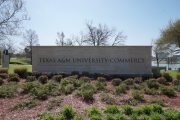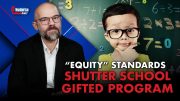
The organization even compared the purported student loan debt “crisis” with the collapse of the housing industry:
With student loan debt now topping U.S. credit card debt and few or no options available for distressed borrowers (including unwary parents who co-signed loans and now face the loss of nest eggs, retirement homes and other assets), America faces the very real possibility of another major economic threat on a par with the devastating home mortgage crisis, according to a new survey and report published today [Feb. 7] by the National Association of Consumer Bankruptcy Attorneys (NACBA).
Moreover, the survey reported:
• Nearly two out of five bankruptcy attorneys (39 percent) have seen potential student loan client cases jump 25-50 percent in the last three to four years. About a quarter of bankruptcy attorneys (23 percent) have seen such cases jump by 50 percent to more than 100 percent.
• Most bankruptcy attorneys (95 percent) report that few student loan debtors are seen as having any chance of obtaining a discharge as a result of undue hardship.
• More than four out of five bankruptcy attorneys (82 percent) see the limited availability of student loan discharge in bankruptcy as “a big problem” barring a fresh start for clients.
• Nearly two out of three bankruptcy attorneys (65 percent) say that student loan provider debt collections have become “much more” or “somewhat more” aggressive in the last 18 months.
Most of those clients, the association affirmed, were unable to meet the federal hardship criteria required to exempt their student loans through bankruptcy proceedings. Consequently, many loan co-signers, who are often parents or guardians, are required to cover the payments. Head of the NACBA William Brewer asserted, “This could very well be the next debt bomb for the U.S. economy.”
“Obviously, in the short term, student loan defaults are not going to have the same ripple effect through the economy that mortgage defaults did,” Brewer added. “My concern is that the long-term effect may be even graver, because people who need student loans to try to get a higher education or retraining” will be reluctant to apply for them.
In a previous analysis, Moody’s Analytics conversely noted that student lending is not on a par with the housing crisis, as the student loan market is only one-tenth the size of the mortgage market. “Despite its rapid growth even as credit quality weakened during and after the recession, student lending is not likely to turn into the next subprime crisis,” Moody’s reported earlier this year.
Student loan debt has boosted in recent years to a sum of $867 billion in 2011, which surpasses the $704 billion in outstanding U.S. credit card debt. Throughout the 2010-11 school year, students racked up $104 billion in loan debt from the Education Department — a 50-percent spike in three years — while private education loans dipped by 65 percent in that same period, to $7.9 billion.
What many analysts and political leaders fail to acknowledge is the underlying culprit of the student loan debt debacle. Many observers blame rising tuition costs, which are undoubtedly a factor. But why are colleges and universities charging more for tuition? Similar to the U.S. healthcare system, the present quandary stems from a third-party-payment system. Government has become a chief player in subsidizing tuition costs, and as a result, students are amassing bulky government loans to finance their education.
Indeed, government meddling has manipulated the higher-education market, and has discouraged high-school graduates — who are often naïve in their educational pursuits — from attending the most competitively priced institutions. Consequently, many of these young individuals choose schools charging $30,000 per year in tuition over schools charging $10,000 per year, hoping they will land high-paying jobs come graduation. Such skewed incentives have granted colleges and universities the unbounded authority to inflate tuition rates to astronomical levels, and thanks to federally induced market distortion, these institutions get off scot-free.
Adding to the government’s intervention in the higher-education market is a Federal Reserve system that is generating an inflationary hailstorm. In October 2011, GOP presidential candidate Ron Paul explained in an article for USA Today how these two government measures have spurred an adverse evolution in this delicate sector of the U.S. economy:
Like housing and medicine, education costs went through the roof when government became involved. In the last three decades, the overall inflation rate has increased more than 100%, which means we basically pay double now for everything we buy. This price inflation is an inevitable consequence of printing money out of thin air and devaluing our dollar. But compare this inflation to the rise in the cost of college tuition, which has increased almost 500% in the same amount of time.
This is what happens when we print money out of thin air and couple it with government intervention in education.



